Your cart is currently empty!
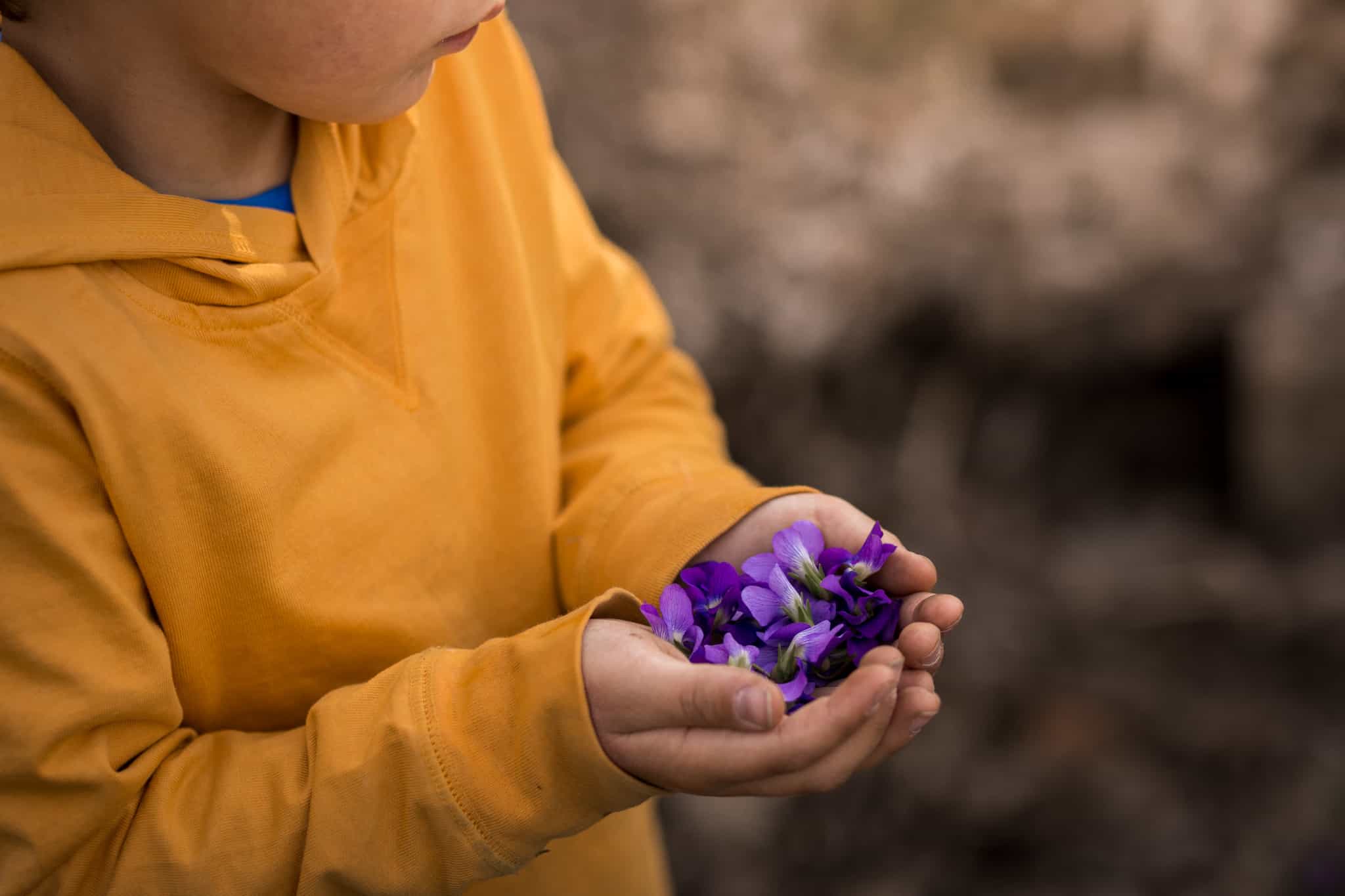
Wild Violet Foraging with Kids & Color-Changing Simple Syrup
Wild violets are one of the very first sure signs of spring and the warmth it brings. Seeing that first colorful sign of spring after a long cold winter is such a happy sight. While most people may consider violets as a pesky weed that commonly grows in yards, we’re here to change your mind. Today, Meghan Garriott, Illinois mom of three, is here to tell you all about the benefits of wild violets and how useful (and fun) they can be. Soon, you and your kids will be searching the yard and excited about foraging violets out in the wild! These edible and medicinal little flowers and leaves can be used to make jellies, color-changing simple syrups, salves, and so much more.
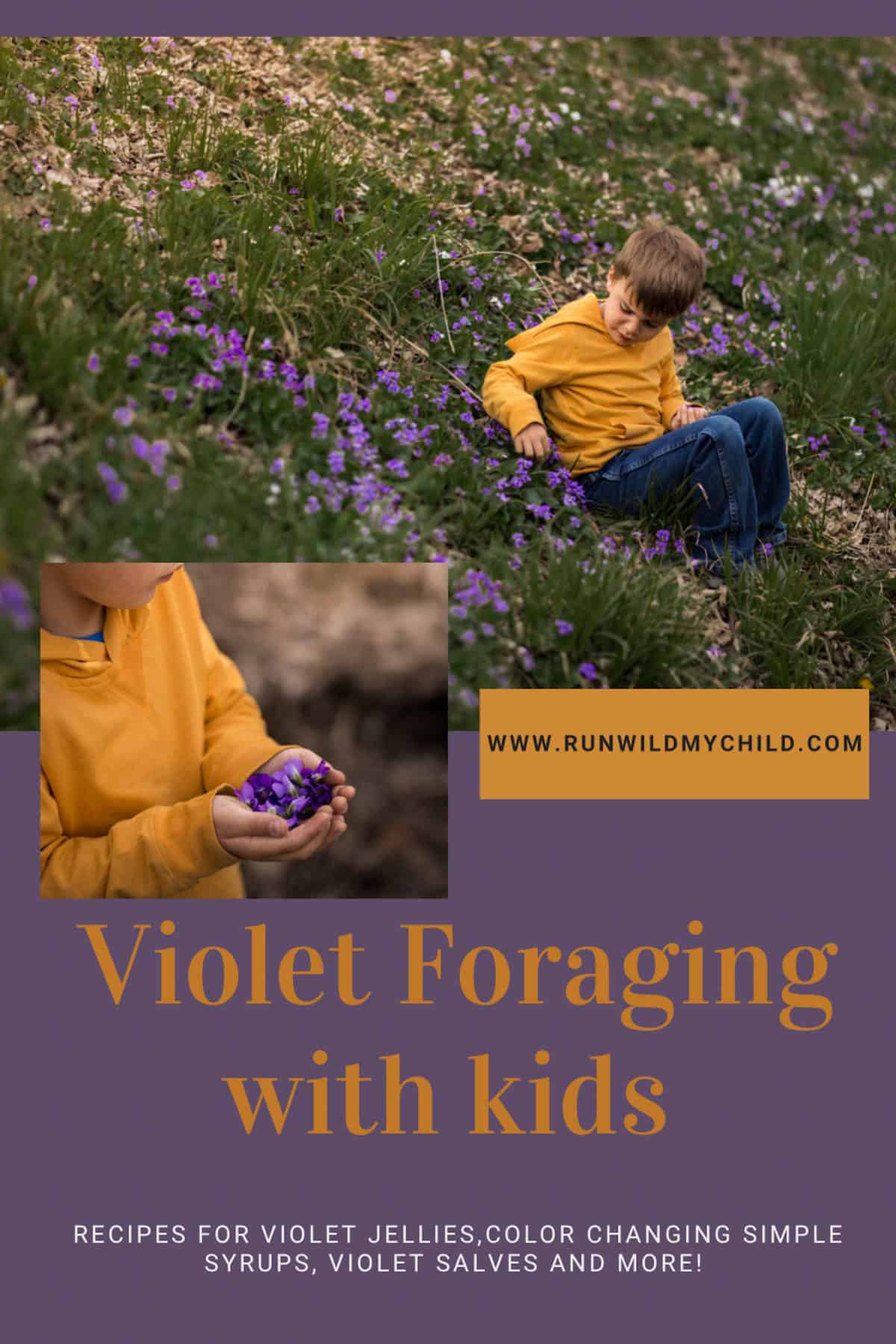
Benefits of foraging for violets
Foraging is gathering plant matter provided by nature to eat, use, or consume. Did you know that violet flowers (as well as their young leaves) are edible? Violets are known to be high in vitamin A and vitamin C and can be used in many different ways. In addition to being edible, violets have many known medicinal uses. Studies have shown that violets can help with insomnia, decrease oral cancers, and are good for skincare oils and salves.
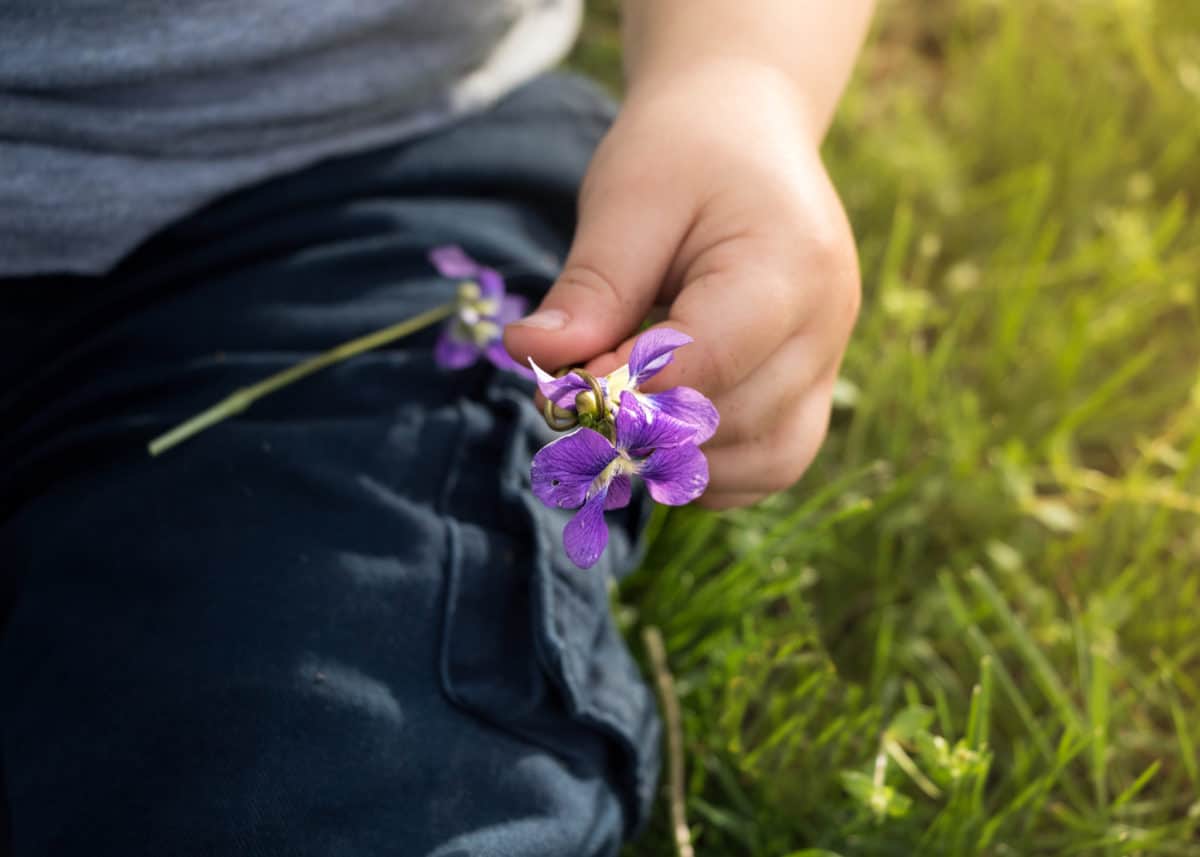
Identifying wild violets for foraging
There are many different species of violets that can be found across the United States, Canada, and Australia. Violets can be white, yellow, or their namesake purple color. The violet colors can range from dark purple to a light lavender color. The contrast between the green leaves and violet flowers makes them the easiest to spot. Yellow varieties are may cause an upset stomach in large quantities, so we stick to the purple and white flowers.
The flower portion of a violet has five irregular petals that usually range from a penny to a half dollar in size. The stems of the flowers can be 3-6 inches long, which makes them easy for little hands to pick. The stems stick out from heart-shaped leaves with serrated edges. There are usually many flowers clumped together in one patch making them easy to spot even for the littlest foragers.
Violets spread and reproduce by underground rhizomes and seeds. These seeds sprout later in the season after the blooms are long gone. This is great news because it means you don’t have to worry about your harvest affecting next year’s growth. You can pick all you want!
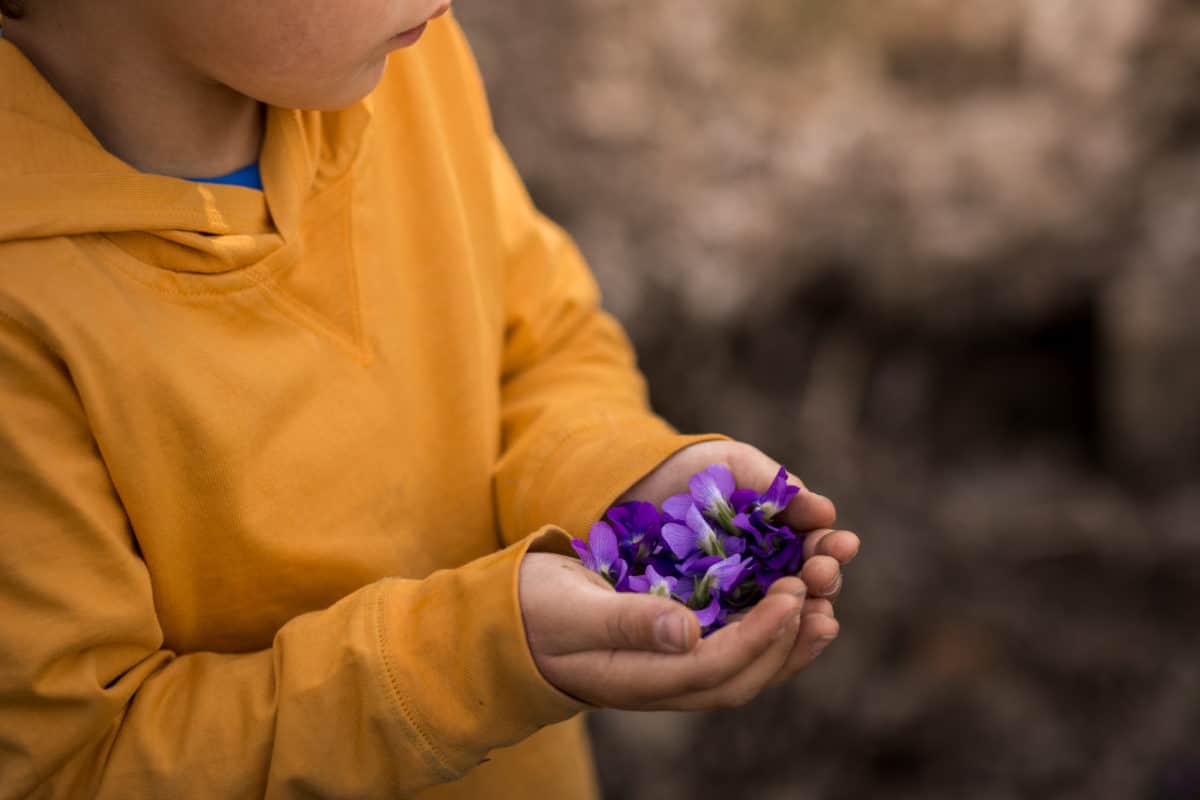
Foraging for violets with children
The first time my 4 year old went violet foraging it only took a few minutes for him to begin finding patches by himself by identifying the leaves alone. When your children find them on their own for the first time, make sure to praise their efforts. Get excited with them! It’s a big deal for them to find things on their own and this extra encouragement can make foraging a lot more fun when they are proud of themselves.
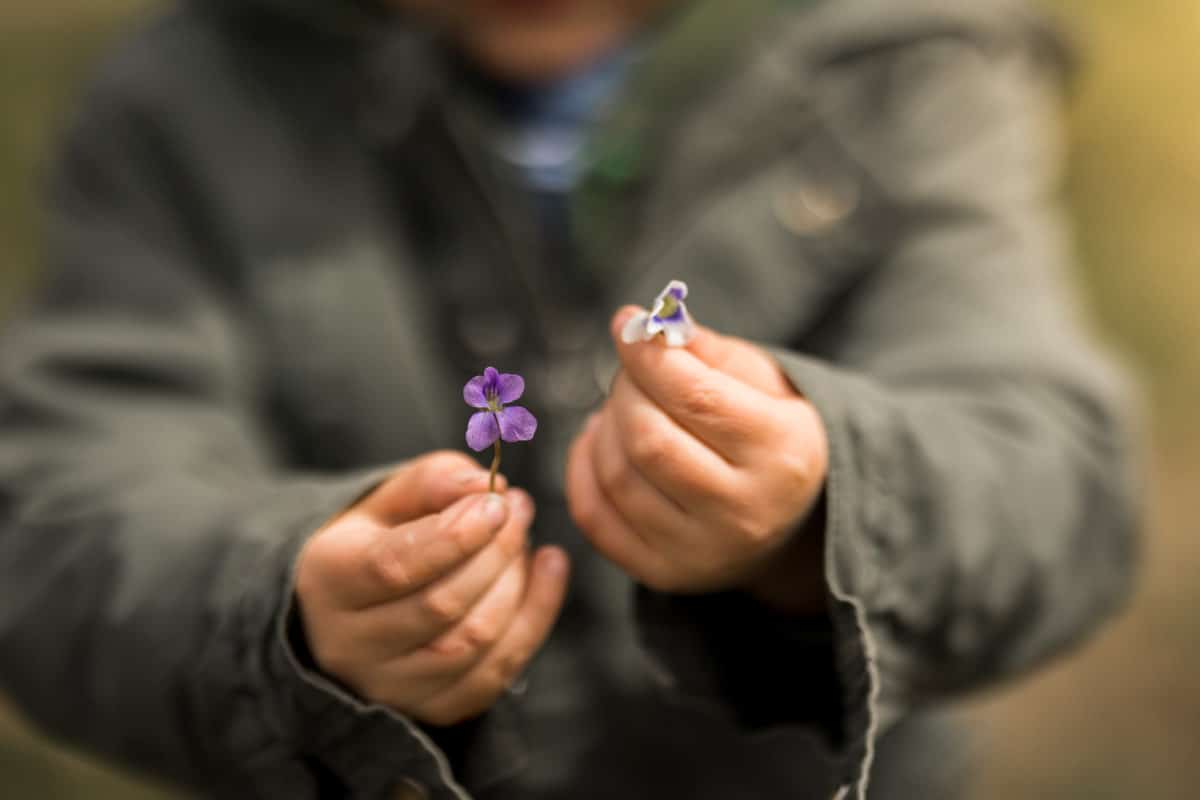
Where to look for violets in the wild
Violets prefer partial sun or light shade and a good amount of moisture. We have the best luck finding them along shallow creeks with adequate tree coverage. In the earliest part of spring, you will find the first violets where the sun can warm the soil. The shadier areas will have violets in the later spring once the soil there warms to the right temperature. Violets can also be found in yards in early spring before the first mowing.

When to forage violets
The best time of year to forage for violet is early spring, when nighttime temperatures begin to rise above freezing. Once you see violet leaves unraveling from the ground it won’t be long (about a week) before the flowers are there, as well.
Since violets are found across the US and Canada, the best time to find violets can vary based on the weather conditions of that year and the general seasonality of the area. Here in the Midwest, April is a sure time to forage for violets. Violets only bloom for about 4-6 weeks, so if you are hoping to find them, you’ll want to keep an eye on the weather so you don’t miss this window.
While not as plentiful, violets also bloom in late fall when the temperatures begin to drop again.

Foraging safety tips
Foraging with kids is a fun outdoor physical family activity that can really connect you with nature, but some precautions should be taken. First, you (and your children) should always be very aware of where you are foraging for violets (or anything, really). If you are not familiar with the area, take some time to look around before you begin picking. Check for animal nests and be alert for snakes or insects that may be around your area. Also, check for poison ivy or poison oak. It’s best to find a patch of violets, then do a quick visual check of the area. Once cleared, then direct the kids to that area for foraging. Remind kids that nature is home to wildlife, and they should keep watch for dangers as well.
You should also be aware of any local rules or regulations regarding foraging or harvesting if you’re on public land or parks. Many parks have rules about taking nothing out of the park or restrictions against picking flora. Only forage in places where it’s allowed or you have express permission from the landowner.
You also need to be very cautious with your find before ever consuming something that you foraged. Double and triple-check your haul to make sure that you have accurately identified the plant and didn’t include any other plants or materials (including bugs, webs, etc.). Remove anything that is not the item you were foraging and NEVER consume anything you’re unsure about. Find more outdoor safety tips here.
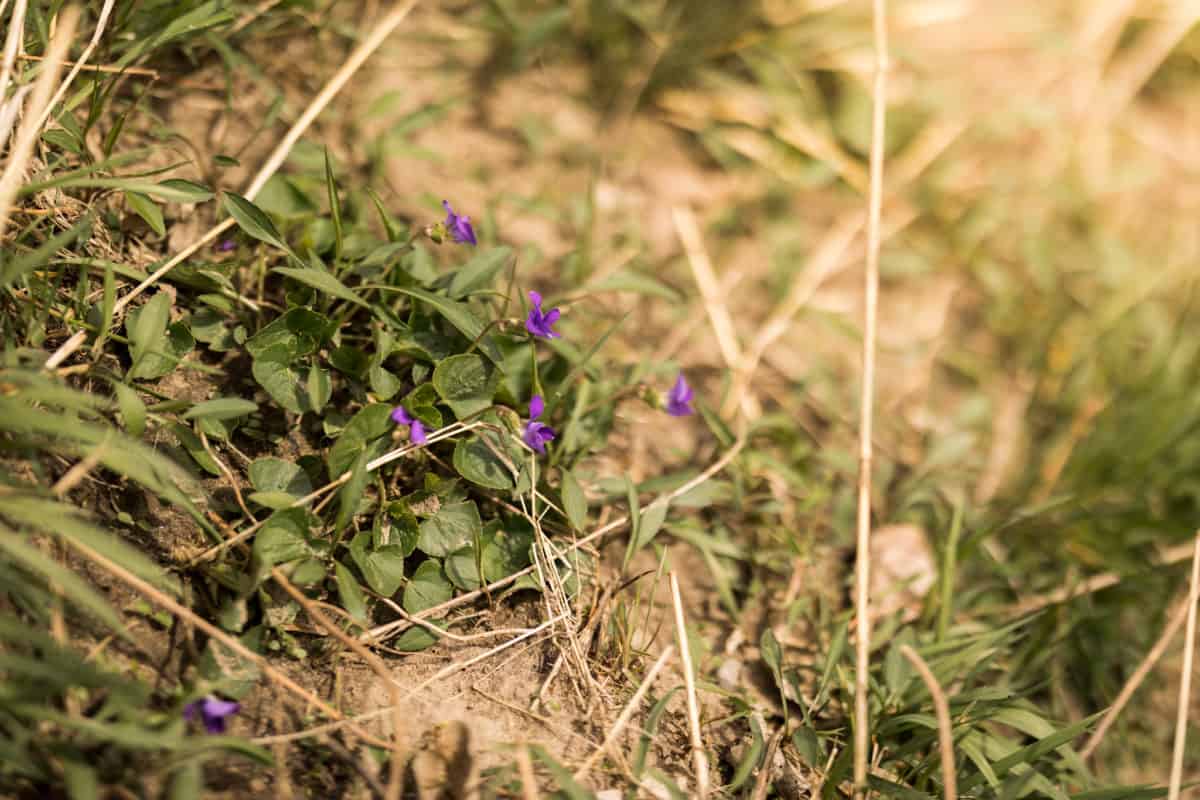
Using wild violets to make color-changing simple syrup
Violet simple syrup is our favorite thing to make with our foraged violets. Not only is it delicious, but it’s so much fun for kids! The syrup changes colors based on the type of liquid you add it to! It’s a really neat hands-on science experiment for kids to learn about pH.
The violet syrup itself can range from bright purple to dark blue. When added to an acid like lemonade, the drink will turn pink. In a base like baking soda water, it will turn greenish. How fun is that?! Let me show you how to make it.
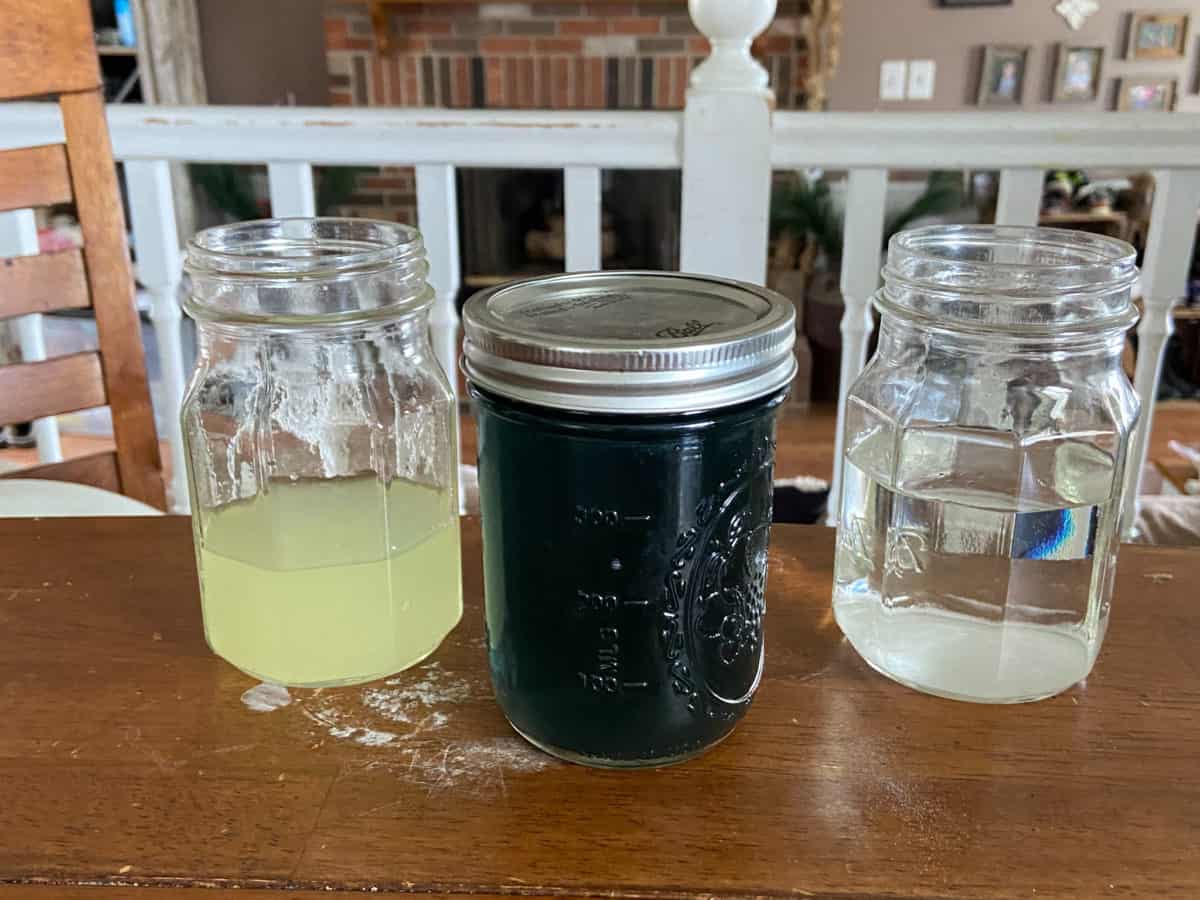
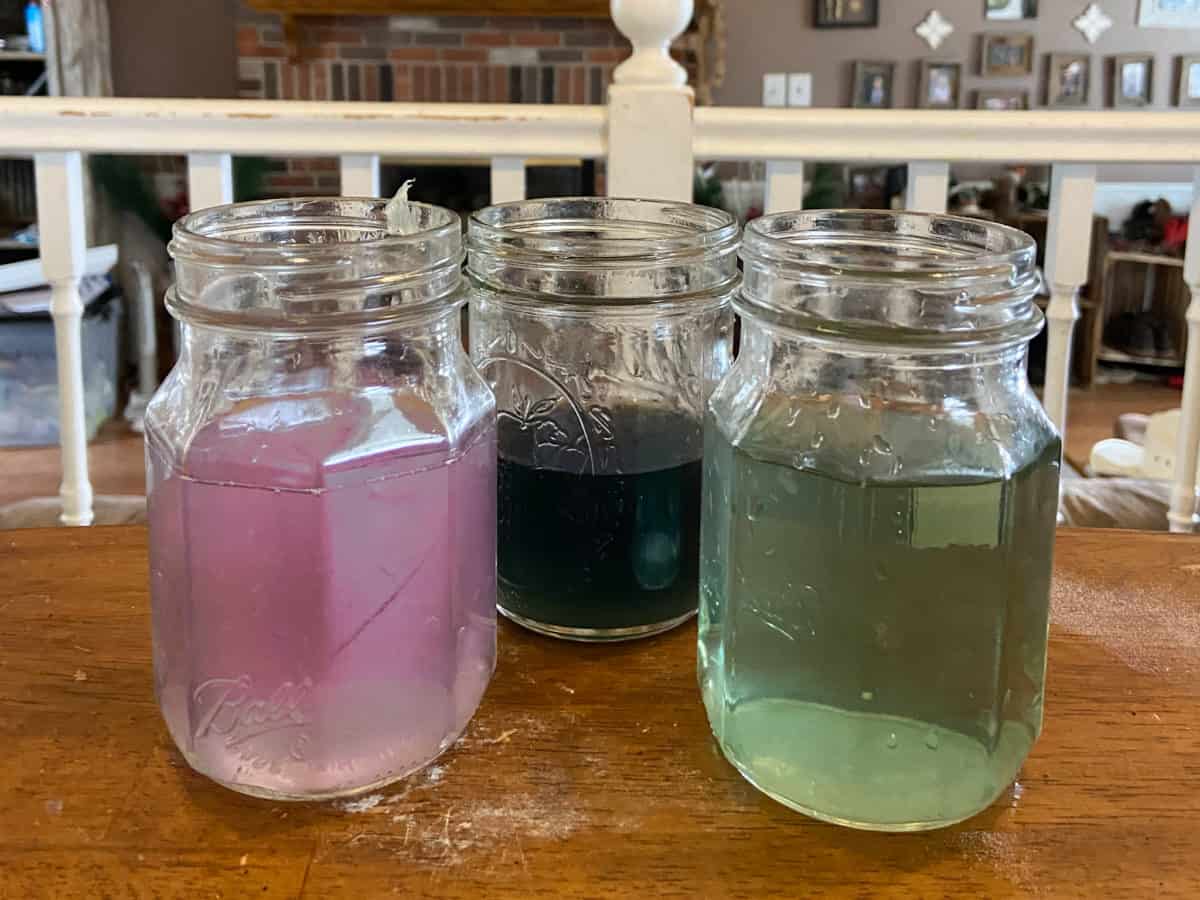
How to make wild violet syrup
When we search for violets to make syrup, we usually aim to loosely fill a quart-sized mason jar. This gives you just the right amount of foraged violets to make a batch of color-changing simple syrup. Here’s the process:
- Remove the stems of the plants from the flowers. Keep only the flowers for the syrup.
- Do a quick rinse of the flowers to remove any dirt, sand, or insects.
- Once rinsed, put the flowers back in the quart jar and fill it to the top with it hot distilled water.
- Seal the jar and let it steep overnight.
- In the morning, strain the flowers from the liquid, leaving behind beautiful violet-tinted water.
- Set the mason jar filled with the violet water into a pot of water to heat it up enough so that it’s warm.
- To make the syrup, mix equal parts warm violet water and sugar (1 cup water + 1 cup sugar) and stir until the super is dissolved.
Here is a video from Alexis @blackforager on how to make the syrup.
Ways to use violet syrup
You can mix the violet simple syrup into all kinds of drinks. If you add it to an acid drink (like lemonade), it’ll turn pink!
Our favorite way to use our forage wild violet simple syrup is in homemade lime water. The citrus mixed with the sweet floral of the violet syrup is so good! The resulting beautiful pink color is an added bonus. My kids love to watch the drink change color as we mix the syrup and lime water.
The simple syrup can be added to any drink of your choice. Consider adding it to tea, juice, mocktails/cocktails, sparkling water, or even just diluting it with water and adding other fresh herbs like mint or basil. The syrup would also be as delicious as a drizzle on baked goods or pancakes!
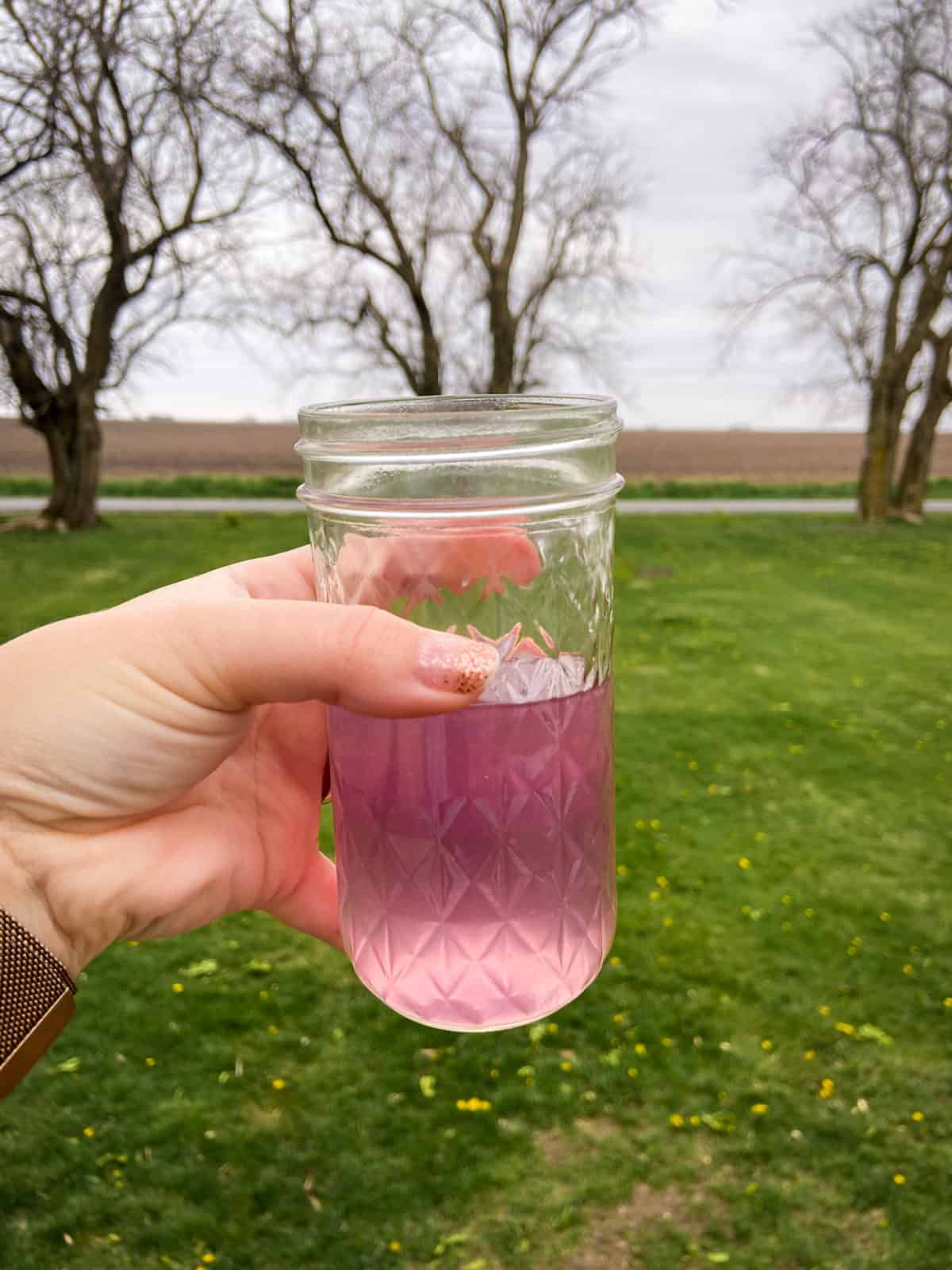
Using violet leaves
Violet flowers aren’t the only part of the plant that is usable. Young violet leaves can be used in salads, in teas, and as garnishes. The leaves, as well as the flowers, can be infused in oils for use on the skin and can be used to make balms and salves. New growth emerges from the ground rolled up like a funnel and slowly unrolls from the center of the heart, shaped like a rose.
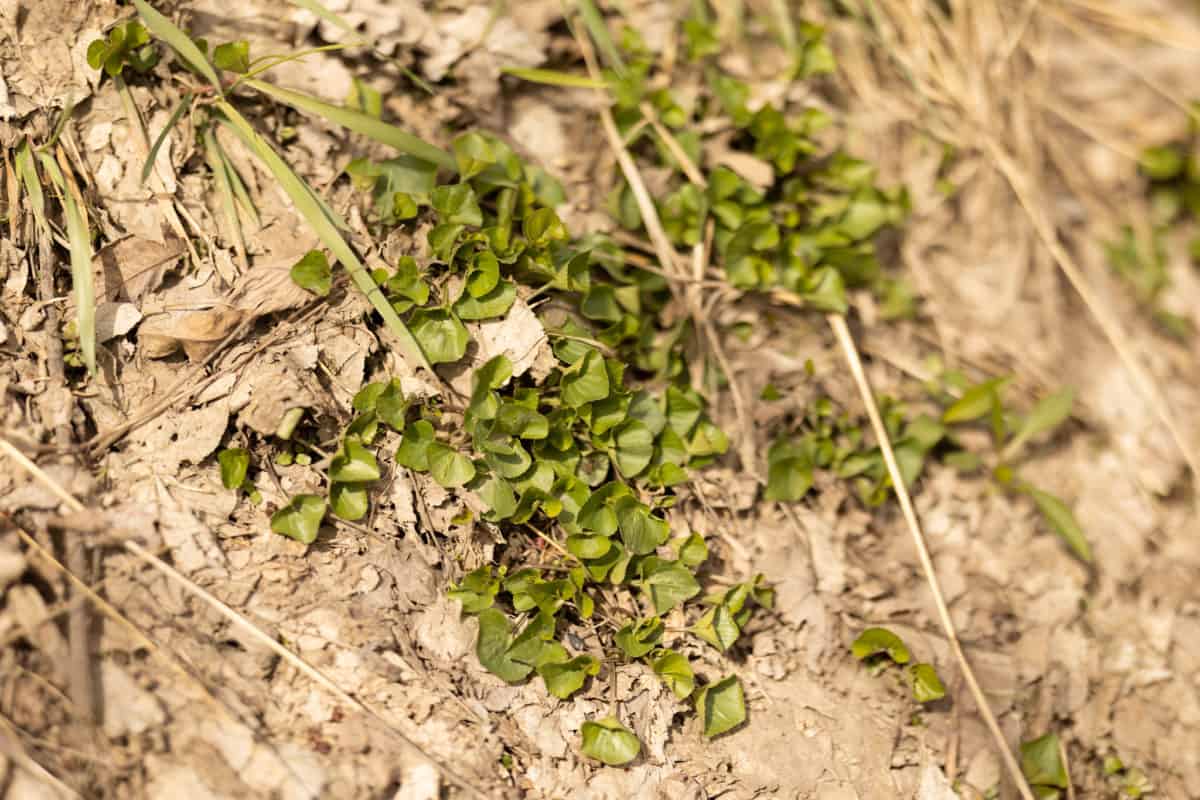
Wild violet treats – jellies, cookies, and cakes
Making syrup isn’t the only way you can use your foraged wild violet flowers. The flowers of the violets can also be pressed or used to decorate desserts such as shortbread cookies and cakes. Here are some awesome recipes to try out!
More springtime foraging fun
Foraging violets is a fun springtime activity, but not the only one! If you’re not able to find violets or want some other springtime foraging ideas, never fear! Other spring blooms that are edible (and can be used to make similar items) are Forsythia, dandelions, and lilacs. We also have a great post on how to forage for pine tree tips and make a DIY foraged pine tree tip syrup.
There is no shortage of delicious and amazing things to make after you forage violets. So get outside and have some fun while collecting the goods!
Do you forage with your kids?

About the author
Meghan is a country living, mom of 2 boys in rural central Illinois (with a baby girl on the way). She is a Physical Therapist Assistant by trade but spends most of her time outside with her family. At home, she has large flower, herb, and vegetable gardens to tend to and 3 large dogs to play with. As a family, they enjoy hiking, camping, boating, fishing, and helping her in-laws show and raise livestock. Photography became a hobby while in isolation after her oldest son’s bone marrow transplant. It has since become a passion to capture her family’s daily life. Throughout her family’s journey with rare disease and transplant, the outdoors have been a safe space for the whole family to grow, learn, and thrive.
You can find more from Meghan online in the following locations:
Instagram: @meghangarriott
Meghan’s RWMC posts:
Comments
3 responses to “Wild Violet Foraging with Kids & Color-Changing Simple Syrup”
[…] Forage violets for color-changing syrup […]
[…] Forage violets for color-changing syrup […]
[…] flowers can be used to make jellies, simple, syrups, and candies. Here is an article dedicated to foraging violets with kids and using them to make a simple syrup that will change […]


Leave a Reply